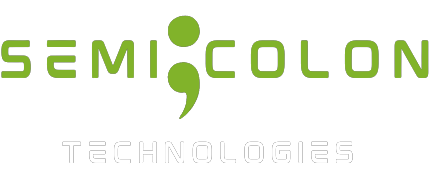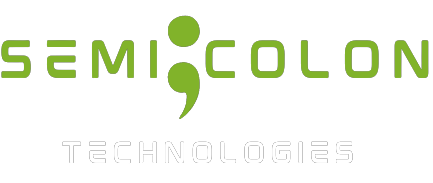
Mastering Semantic SEO for Business Specialties Made Easy
- Semicolon
- November 6, 2023
- All Blogs, Digital Marketing, SEO Services
- 0 Comments
How does semantic search function?
Semantic search delivers highly relevant results by understanding user language and intent. Modern search engines, powered by machine learning and AI, grasp word meanings, their relationships, and context. Google utilizes The Knowledge Graph to categorize entities and topics, enhancing understanding.
This approach surpasses traditional keyword matching, showcasing a more sophisticated strategy. Today’s semantic search engines continually enhance language comprehension, ensuring precise results. Understanding both search intent and content purpose is crucial in providing valuable responses to user queries.
What are the advantages of semantic search?
Semantic search offers numerous benefits:
For users:
1. Improved user experience due to higher-quality search results.
2. Quicker access to the desired knowledge; sometimes predicting their next query.
3. Relevant results across various tools and methods.
For search engines:
1. Efficient handling of rising conversational search requests from mobile and smart home devices, often through voice search.
2. Encouraging broader search engine usage by providing genuinely helpful services, leading to a wealth of information to enhance language study.
What is semantic content?
Semantics explores the meaning in language. In the context of writing, semantic content refers to using words, phrases, and sentences to convey specific meanings.
Semantic writing aims to create valuable resources on a particular topic by intricately connecting words, phrases, concepts, and sentences. It involves meticulous attention to details, from sentence construction to overall page organization.
Essentially, it means writing for people effectively while adhering to grammatical norms. It emphasizes clarity, conciseness, and readability. This approach contextualizes themes with related keywords and eliminates unnecessary terms. Complex jargon isn’t necessary, but depth of material is.
In SEO, semantic content is crucial for ranking. Search engines employ Natural Language Processing (NLP) to comprehend our content, evaluating the words used and their relationships.
Enhancing E-commerce SEO with Semantics
Is semantic SEO relevant for e-commerce beyond blogs and journalism? Absolutely. Every website, especially e-commerce sites, can benefit from semantic SEO.
Don’t dismiss semantic SEO if you run an online store—it’s highly effective in the e-commerce realm. Elements like phrase-based indexing, writing for Natural Language Processing (NLP), content structure, and readability are crucial for category, product, and landing page content.
Research related entities when creating category, subcategory, and product pages. Provide comprehensive product details, emphasizing their advantages and key selling points. Consider your target audience and ensure your content serves a purpose.
Unlocking E-commerce Potential with Keyword Gap Analysis
Keyword gap analysis reveals where your e-commerce store lags behind competitors. Organize categories and subcategories based on this insight. Identify keyword groups lacking dedicated pages, allowing you to create tailored content.
Consider:
– Alternative product arrangements (e.g., by color or style)
– Missing support guides
– Potential new product categories
Organize keywords from the analysis into clusters to plan new pages. Curate items, craft optimized copy, blending keywords, and emphasizing your central message. This strategic approach enhances your online presence.
Related Posts
- Semicolon
- November 6, 2023
Changing Trends in SEO and Content Marketing for 2023
SEO and Content Marketing are vital aspects of digital marketing, enhancing online visibility, ..
- Semicolon
- March 6, 2023
HERE’S EVERYTHING YOU NEED TO KNOW ABOUT MARKETING TAX DEDUCTIONS
According to a recent study, the average American spends 6 hours and 42 minutes online. What do ..





